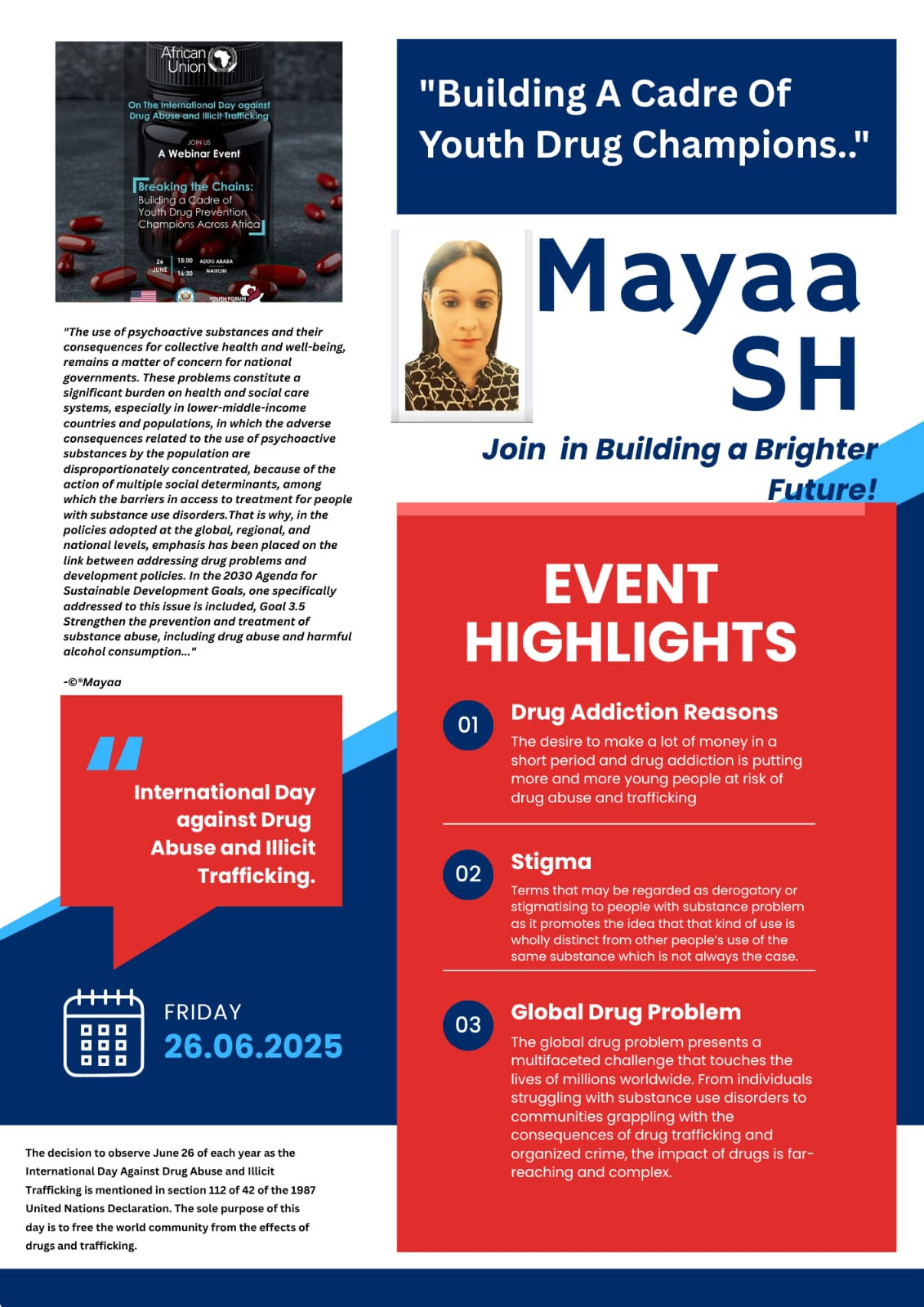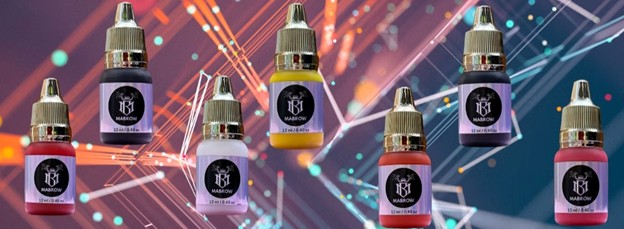
Mayaa SH
“Building A Cadre Of Youth Drug Champions…”
The International Day Against Drug Abuse and Illicit Trafficking, also known as World Drug Day, is observed annually on June 26th . This day serves as a global platform to raise awareness about the dangers of drug abuse and the impact of the illegal drug trade on society . It is a day for individuals, communities, and organizations worldwide to strengthen their efforts in combating drug abuse, preventing substance use disorders, and disrupting the networks involved in illicit drug trafficking .The global drug problem presents a multifaceted challenge, impacting millions worldwide . The illicit drug trade is deeply connected to other crimes, including human trafficking, illegal mining, and environmental destruction, creating a vicious cycle that entrenches poverty, exploitation, institutional weakness, and addiction . In regions marked by instability, organized criminal networks are expanding drug production and trafficking at an unprecedented scale . The rise of synthetic drugs, including highly potent opioids, presents a new and deadly challenge, driving overdose deaths and putting pressure on already fragile health systems .
Key Themes and Focus Areas :
The United Nations General Assembly established this day on December 7, 1987, through resolution 42/112 .The date, June 26th, was chosen to commemorate Lin Zexu’s dismantling of the opium trade in Humen, Guangdong, just before the First Opium War in China .The primary goal is to strengthen international action and cooperation to achieve a world free of drug abuse. The day also aims to promote awareness of the serious health risks associated with drug use and advocate for policies that reduce drug demand and supply .
Current Challenges and Global Impact :
Each year, the UN Office on Drugs and Crime (UNODC) selects a theme for World Drug Day, focusing on specific aspects of the global drug problem and promoting effective strategies to address it . The themes often highlight the need for a comprehensive approach that includes prevention, treatment, and international cooperation Each year there are numerous campaigns to “Break the cycle. #StopOrganizedCrime,” emphasizes the need for coordinated long-term action to break the cycle of organized crime and drug trafficking by addressing root causes, investing in prevention, and building stronger health, education, and social systems .
The AU is a continental body comprising all 55 member states located on the African continent. It plays a significant role in addressing issues such as peace and security, economic development, and social progress.ISSUP is a global organization that aims to advance the field of substance use prevention, treatment, and recovery. It provides training, resources, and networking opportunities for professionals in this field.
Addressing the global drug problem requires a multi-pronged approach. This includes:
Strategies and Actions :
The global drug problem presents a multifaceted challenge, impacting millions worldwide . The illicit drug trade is deeply connected to other crimes, including human trafficking, illegal mining, and environmental destruction, creating a vicious cycle that entrenches poverty, exploitation, institutional weakness, and addiction . In regions marked by instability, organized criminal networks are expanding drug production and trafficking at an unprecedented scale . The rise of synthetic drugs, including highly potent opioids, presents a new and deadly challenge, driving overdose deaths and putting pressure on already fragile health systems . The UN estimates the value of the illegal drug trade at US$322 billion a year .
Mayaa SH asserts that Human trafficking, a modern form of slavery, often involves the exploitation of vulnerable individuals, including women, youth, and immigrants, who are forced to provide services with little or no pay and are deprived of basic freedoms.A significant aspect of this crime is its connection to drug abuse, particularly in the context of the opioid epidemic.Traffickers frequently target individuals with substance use disorders, using the promise of drugs to control their victims.This control can be maintained through various means, including staking out locations like methadone clinics to identify potential victims.Once trapped, victims may become even more dependent on their captors for drugs, making escape incredibly difficult.The use of drugs serves as a tool to keep victims under control, making it more bearable to endure the suffering of their situation.The link between human trafficking and drug abuse is significant, with traffickers often using drugs to lure, control, and exploit their victims.Victims of human trafficking often experience significant psychological trauma, including depression, anxiety, and post-traumatic stress disorder, compounded by their substance dependence.Comprehensive substance abuse treatment programs can provide the necessary support to break free from addiction and reclaim their lives through compassionate care and personalized therapies. These programs can help address the complex needs of survivors, offering a path toward recovery and healing.
There are several ways to participate in the International Day Against Drug Abuse and Illicit Trafficking :
How to Get Involved ?
Investing In Prevention: This involves justice, education, healthcare, and alternative livelihoods .
Strengthening Treatment and Rehabilitation: Providing support services for individuals struggling with substance use disorders is essential .
Combating Drug Trafficking: This requires long-term coordinated action to address supply and demand and prevent organized criminal groups from exploiting vulnerabilities .
Promoting Evidence-Based Policies: Implementing and supporting policies that address the root causes of drug abuse and strengthen law enforcement efforts .
Raising Awareness: Using social media, community forums, and educational events to share information about the dangers of drug abuse and the impact of illicit drug trafficking.
“Say No To Drugs”
“The use of psychoactive substances and their consequences for collective health and well-being, remains a matter of concern for national governments. These problems constitute a significant burden on health and social care systems, especially in lower-middle-income countries and populations, in which the adverse consequences related to the use of psychoactive substances by the population are disproportionately concentrated, because of the action of multiple social determinants, among which the barriers in access to treatment for people with substance use disorders.That is why, in the policies adopted at the global, regional, and national levels, emphasis has been placed on the link between addressing drug problems and development policies. In the 2030 Agenda for Sustainable Development Goals, one specifically addressed to this issue is included, Goal 3.5 Strengthen the prevention and treatment of substance abuse, including drug abuse and harmful alcohol consumption…”





